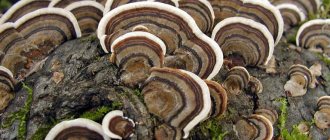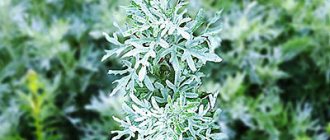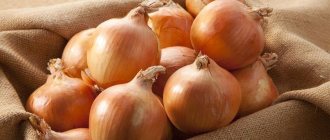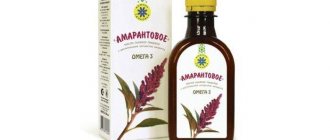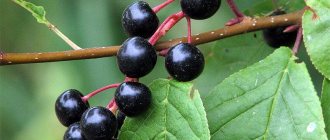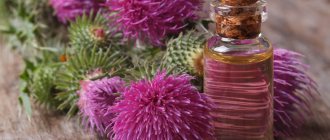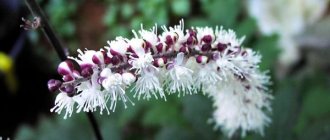Appearance and habitat
Hemlock is a tall plant, the length of which can reach 1.2 m. The rhizome is round with partitions inside, quite fleshy. The stem is branched and can reach 60-120 cm in length. The flowers are white, small in size, united in a complex umbrella. The flowering period occurs in June - August. The poisonous plant bears fruit in August-September.
Hemlock grows in swampy areas, along the banks of lakes and rivers. The plant is widespread in central Russia, throughout the Siberian forest zone and partly in the polar-Arctic zone. Hemlock is also sometimes found in the Caucasus, Central Asia and North America.
Aconite
Fighter, potion king, wolfslayer are the popular names for aconite. The plant is a perennial plant of the Ranunculaceae family. Aconite grew, according to the myth of Ancient Greece, from the saliva of Cerberus, a ferocious three-headed dog who guarded the entrance to the kingdom of the dead.
In our country there are about fifty species of aconite. Most of them are poisonous, the rest are highly poisonous. Alkaloids are the poisonous principle of aconite. Scientific medicine has tamed and put into its service many alkaloids from different plant species (ephedrine, caffeine, morphine). Aconite alkaloids are now being intensively studied. They will find their place in official medicine. Aconites have long been used in traditional medicine, confirming the immortal rule: “In large doses, any medicine is poison, in small doses, any poison is a medicine.”
In past centuries, we used two more accessible types of aconite. Having compared the effects of tinctures from Djungarian aconite growing in Central Asia and northern aconite from the Altai region, we give preference to the first. Djungarian aconite, together with its similar species, is popularly called the “Issyk-Kul root.”
Aconite is especially popular in folk medicine of our time in the treatment of cancer. Along with poisonous weed, hemlock and other poisonous plants, aconite then becomes the main medicine when official medicine gives up.
Tincture of aconite
Pour ten grams of dry rhizome into 0.5 liters of 40-50 proof alcohol. Keep the aconite tincture for 2 weeks in a dark place, shaking occasionally.
Compound
The rhizomes and roots of hemlock contain cicutotoxin and cicutol - nitrogen-free toxic substances. Also found in their composition are essential oils based on p-cymene and cumic aldehyde. Vekha leaves are saturated with alkaloids, flavonoids and polyacetylene elements. All parts of the plant contain a poisonous element - cicutin. This substance is found in large quantities in the rhizome, which becomes especially toxic in early spring and late autumn. It is important to remember that the poison is not destroyed by high temperatures and is preserved even in a dried plant.
Effect of poison
Hemlock is a very poisonous plant. There are often cases of poisoning of cattle with milestones. Cicutin also poses a danger to humans. After consuming any part of the plant, in most cases death occurs within a few hours. The first signs of intoxication of the body appear in the interval from several minutes to 2 hours.
Symptoms of cicutin poisoning:
- convulsions;
- heavy salivation;
- dizziness;
- burning in the abdomen;
- vomit;
- dilated pupils;
- slow heart rate;
- convulsions;
- paralysis of the tongue muscles.
First aid for poisoning
Hemlock poison can be neutralized using alkalis and concentrated acids. As an antidote, they use drugs that cause a gag reflex, sour drinks, strong black coffee, and place mustard plasters on the back and shoulders.
When the first symptoms of poisoning appear, you must:
- rinse the stomach with a 0.1% solution of potassium permanganate (this will help stop the absorption of the poison into the blood);
- drink 10 tablets of activated carbon;
- do a high cleansing enema;
- it is possible to use saline laxatives (sodium sulfate and magnesium in a dosage of 30 g per 2 cups of boiled water);
- drink a sour drink (for example, jelly);
- If necessary, the victim is given artificial respiration.
Use of hemlock in medicine
All parts of the plant are used in folk medicine. The poisonous herb wekh is included in medications and is used in the treatment of:
- nervous disorders;
- epilepsy;
- mental disorders;
- headaches;
- postpartum seizures;
- migraines;
- gout;
- angina pectoris.
Tinctures from poisonous wege are used for the treatment of bronchial asthma, stuttering, and whooping cough. This remedy also has an expectorant, sedative, anticonvulsant, analgesic, diaphoretic and narcotic effect.
Hemlock compresses are used for inflammation of the lymph nodes.
The leaves and root of the plant are used to make ointments that help relieve back pain and symptoms of arthritis.
Use of milestone poison in the treatment of cancer
Cicutin is a potent poison that can slow down the process of cell division (mitosis). This is why the toxic substances of the poisonous plant are used to treat cancer. Hemlock poison inhibits tumor growth and eliminates malignant tumors and cells. Preparations that contain cicutin block the process of cell reproduction at the initial stage - during metaphase, when the nucleus is just beginning to divide. That is why the use of poisonous milestone is effective at any stage of the disease. In addition, cicutin is able to eliminate metastases (secondary cancer cells). It is important to note that hemlock-based drugs have a more gentle effect on the body than any form of polychemotherapy. This is due to the fact that cicutin affects only malignant cells and does not affect healthy tissue. Treatment with drugs based on Vekha helps to avoid relapse of the disease.
Veh poisonous
A perennial herbaceous plant that smells like celery (the smell is deceiving). The plant blooms in July-August. Has a thick root. According to legend, Socrates was poisoned by hemlock.
Where does the poisonous weed grow?
Hemlock, or poisonous weed, loves wet wetlands, very often grows right in a reservoir (near the shore), and is found in swamps. This plant cannot be found in dry meadows.
Chemical composition of the plant
The plant contains the alkaloid cicutotoxin, which can paralyze breathing, the alkaloid cicutin, essential oils, etc.
Recipes for cancer treatment
Attention! Before taking tincture of Vekha and other drugs based on it, you should consult your doctor.
An infusion of hemlock for the treatment of cancer is prepared as follows: take 10 g of powder from the rhizome of the vekha and pour it with 500 ml of vodka. Then the mixture should infuse for 14 days.
There are several regimens for taking this infusion in the treatment of malignant tumors.
1. Preventive. Start taking the infusion with 1 drop, increasing the dose every day. Take 20 drops for 20 days. After this, the dose is reduced, and on day 40 you should take 1 drop.
2. Medicinal. Treatment begins with 2 drops, which must be taken in the morning and evening. Every day the dose increases by 1 drop. In the morning on the 11th day of taking the drug, take 22 drops. After this, their number is reduced. In the evening, on day 20, the course of treatment ends.
What are the most effective cancer treatments today?
World medicine is developing. More and more new methods of cancer treatment are emerging. But there are proven over the years, proven methods and protocols that stood at the origins of the conscious fight against cancer. These methods are successfully used to treat cancer abroad, which indicates their effectiveness, reliability and testing. I would like to start with them.
Cancer surgery is essentially the removal of a cancerous tumor. A radical method of treating cancer, but also the most effective.
Treatment abroad using classical chemotherapy is carried out by introducing substances into the patient’s blood that have a negative effect on the tumor.
How chemotherapy drugs work:
- They disrupt tumor cell division;
- Block the synthesis of vital substances;
- Slow down or stop the growth of new blood vessels that feed the tumor;
- “Kill” tumor cells.
Chemotherapy is used both as an independent method of treating cancer and in combination with others. But, unfortunately, chemotherapy is carried out with very toxic substances, which causes the patient to not feel very good.
The most common complications from taking chemotherapy drugs:
- Nausea or vomiting;
- Liver damage;
- Decrease in the number of platelets and leukocytes;
- Hair loss;
- Joint pain;
- Weakness.
To reduce the toxic syndrome from the use of chemotherapy in the treatment of cancer, more modern methods of administering chemotherapy are used, namely:
- Injection into the artery closest to the tumor;
- Intraperitoneal, intrapleural or other methods of drug administration, depending on the location of the tumor.
The principle of treating cancer with radiation or radiotherapy is the effect of an ionizing beam on a malignant tumor, during which cancer cells stop dividing and die. This method is the progenitor of many new methods of using radiation therapy.
Hormonal therapy for cancer treatment is used only if the tumor is sensitive to hormones. If some hormones cause the tumor to grow and divide.
Apply for treatment
To remove tumors, the CyberKnife technique is used, which is an excellent alternative to surgery. This is a completely unique, robotic and high-precision method of radiological impact on a tumor even in the most inaccessible places, where even the most skillful hands of a surgeon cannot always cope.
The essence of the method is the ultra-precise direction of a beam of gamma rays onto the tumor. 4-5 sessions are enough to destroy the tumor. This does not require anesthesia or an incision, and the healthy tissue around the tumor is not damaged. The method is also very effective for removing metastases in various organs.
This type of cancer treatment is not suitable for all types of tumors.
Main use for:
- Kidney cancer;
- Liver cancer;
- Rectal cancer;
- Lung cancer.
With this method, a probe is inserted into the tumor and heated with radio waves. An increase in temperature causes necrosis of tumor tissue.
Cryodestruction of cancer
The cryodestruction method for treating cancer is minimally invasive and bloodless. Under the influence of ultra-low temperatures, the cells and intercellular space of the tumor grow with ice crystals and, as a result, are destroyed.
Cancer immunotherapy
The essence of cancer immunotherapy is to teach the body to destroy cancer cells on its own. For this purpose, vaccines and special medicines are created, which are produced separately for each patient.
Strictly speaking, targeted therapy is a new generation of chemotherapy. The chemicals used for this method are “smart”. They are strictly dosed, selected on an individual basis for each type of cancer. The action of targeted therapy is not aimed at destroying tumor cells, but at stopping growth and division.
Chemoembolization
Also a variation on the theme of chemotherapy, but using new technologies. This is a method of local chemotherapy by embolization (closing the lumen) of the artery feeding the tumor or metastasis.
Embolization is carried out with a material that contains an antitumor drug.
Brachytherapy for cancer
Interstitial radiotherapy or brachytherapy is a more modern type of radiotherapy. Treatment occurs by implanting a weak but constant source of radiation inside the organ affected by the tumor.
Particular attention should be paid to the technical equipment of modern medical institutions, because high efficiency of treatment is achieved through the use of the most modern, and even sometimes unique, equipment.
The technical equipment of operating rooms during surgical intervention is of great importance - the accuracy and success of the operation often depends on it.
Low-invasive methods of cancer treatment demonstrate an effectiveness that is at least as effective as traditional therapy, and in some cases even exceeds it. At the same time, the rehabilitation period after therapy and the level of toxic effects on the patient’s body are reduced.
LaparoscopyThe development of this low-invasive method began at the end of the last century. Laparoscopic surgery, although it lasts longer than conventional operations, has a minimal recovery period and is much easier for patients to tolerate.
Radiofrequency ablation A method in which the tumor is exposed to special electrodes.
Microwave ablation During this method, the surgeon gains access to the tumor, which is localized using ultrasound or tomography. After which the neoplasm is pierced with a microwave-emitting needle-antenna. Microwave energy causes the water molecules in the tumor to spin, which heats it to 60°C, a temperature that causes cell death within 10 minutes.
Laser ablation The method involves excision of the tumor with a laser beam, whose temperature, depending on the power of the installation and expediency, is in the range of 40-300°C.
Cryoablation During therapy, the tumor is treated with liquid nitrogen at a temperature of -196°C. The technique involves 2-3 freezing cycles.
Ultrasound ablation The HIFU (High Intensive Focused Ultrasound) technique does not require surgical access to the tumor and is performed remotely through the skin. During therapy, the tumor is destroyed by a beam of concentrated ultrasound.
In addition to the above methods, electroevaporation, chemical embolization and other methods of chemical destruction of tumors are being actively introduced into oncological practice.
Collection and preparation
In folk medicine, hemlock herb is most often used. It is saturated with poison (as are the roots and rhizomes), so maximum care must be taken when harvesting all parts of the plant. The grass is collected during the flowering period. Roots and rhizomes are harvested in the fall, since in the spring the plant contains the largest amount of poison. It is necessary to dry hemlocks in the shade, in cool, well-ventilated areas.
When collecting poisonous weed, you should only wear gloves, avoiding getting the juice on your skin and eyes.
It is recommended to store hemlock in a container out of the reach of children. Also, veh should not be kept in the same container with other medicinal plants.
Use in folk medicine
In folk medicine, poisonous vek is used as an ingredient in aqueous decoctions and alcoholic extracts from leaves - the preparations must be taken and prepared exactly according to the recipe, without exceeding the dosage.
- Alcohol extract for the prevention of cancer: 1 (one) gram of dry water hemlock leaves is poured with 500 ml of alcohol (70%), kept in the dark for 7 days. Filter, preventing the extract from coming into contact with the skin. Take 1 (one) drop in a teaspoon of water before (20 minutes before) main meals (2).
- Tuberculosis, bronchial asthma: prepared, taken, as in “Alcohol extract for oncological diseases.”
- Treatment of stage 1 oncology: prepare an extract from the dry rhizome of water hemlock (1 gram) in 0.5 liters of alcohol (70%), aged for a week in a dark place. Filter (avoid contact with eyes or skin). Apply according to the scheme (take a portion of the extract with a 5 ml syringe, diluting it in three times the volume of water): first day - 1.0 ml, second - 1.0 ml, third - 1.5 ml, fourth - 2.0 ml, fifth – 2.5 ml, sixth – 3.0 ml, seventh – 5.0 ml, eighth – 5.0 ml, ninth – 5.0 ml, tenth – 3.0 ml, eleventh – 2.5 ml, from the twelfth days up to and including the nineteenth - 2.0 ml, twentieth - 1.5 ml, twenty-first - 1.0 ml. You can take it once 20 minutes before meals, or fractionally, dividing it into two parts.
There are techniques developed by herbalists for the treatment of cancer.
